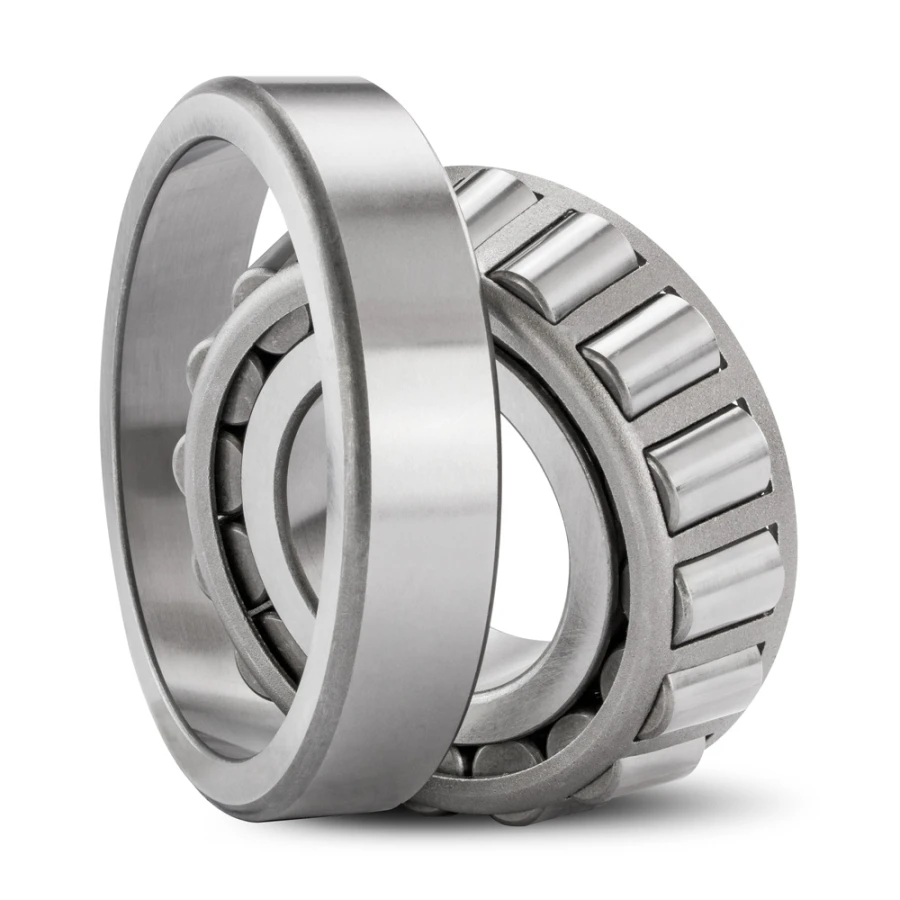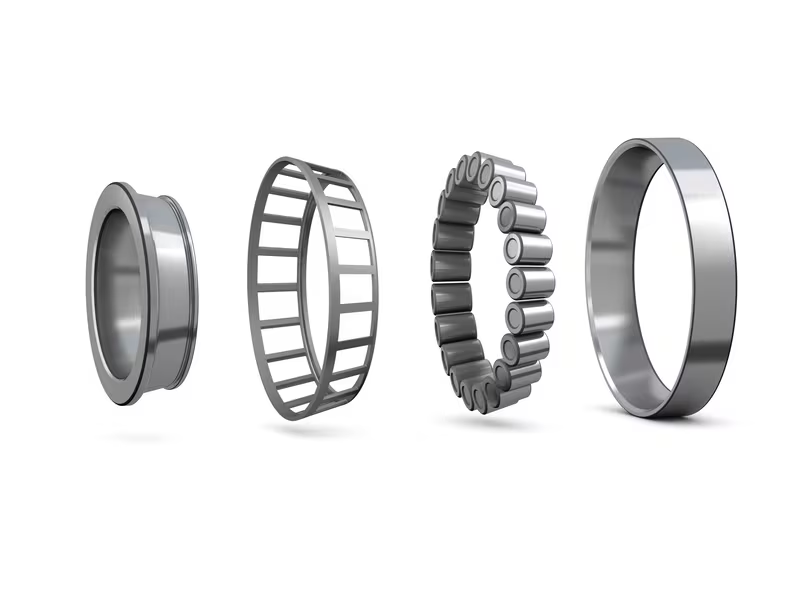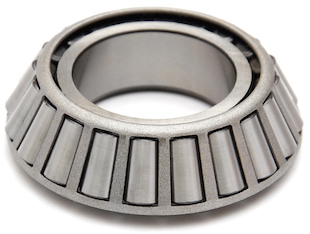
What are the Common Signs of Wear or Damage in Tapered Roller Bearings?
Identifying signs of wear or damage in tapered roller bearings is crucial for maintaining optimal performance and preventing costly failures. Here are the common signs to look for:
- Abnormal Noise:
Unusual noises, such as grinding, clicking, or rumbling sounds, may indicate damage within the bearing. These noises could result from worn rollers, raceways, or insufficient lubrication.
- Vibration:
Excessive vibration or unusual vibrations not typically present during operation may indicate an issue with the bearing. Vibration can result from misalignment, worn components, or uneven loading.
- Increased Operating Temperature:
If the bearing becomes excessively hot during operation, it could indicate inadequate lubrication, excessive friction, or other issues. Monitoring temperature changes can help identify potential problems.
- Irregular Rotation:
If the bearing experiences irregular rotation, such as sticking or rough movement, it could be due to damaged rollers, misalignment, or improper preload.
- Visible Wear:
Inspect the bearing for visible signs of wear or damage, such as pitting, scoring, discoloration, or deformation of the bearing components.
- Increased Noise or Vibration Under Load:
If the bearing makes more noise or vibrates noticeably when subjected to load, it could indicate that the bearing is unable to handle the applied load properly.
- Uneven Wear:
Uneven wear patterns on the rollers or raceways can suggest misalignment or inadequate lubrication, causing the bearing to experience uneven loading.
- Loss of Performance:
If the bearing’s performance decreases, such as reduced efficiency or increased friction, it may indicate wear, contamination, or other issues affecting the bearing’s operation.
- Looseness or Play:
If there’s excessive play or looseness in the bearing assembly, it could be a sign of worn components or inadequate preload, impacting the bearing’s stability and performance.
- Leaks or Contaminants:
Inspect for leaks of lubricant or the presence of contaminants around the bearing. Leaks can indicate seal damage, and contaminants can accelerate wear.
- Observable Damage to Components:
If any bearing components, such as rollers, cages, or raceways, appear visibly damaged or deformed, immediate attention is necessary to prevent further issues.
Regular inspection and maintenance are essential to catch these signs early and prevent further damage. Addressing wear or damage promptly can extend the bearing’s lifespan and avoid costly downtime.

What are Tapered Roller Bearings and How do They Function in Machinery?
Tapered roller bearings are a type of rolling element bearing designed to handle both radial and axial loads by providing a conical geometry. They consist of inner and outer rings, tapered rollers, and a cage that holds the rollers in place. Tapered roller bearings are commonly used in various machinery and equipment for their ability to support high radial and axial loads simultaneously. Here’s how they function in machinery:
- Geometry:
Tapered roller bearings have an inner ring with a conical surface and an outer ring with a matching conical surface. The rollers are also shaped like truncated cones. This geometry allows the rollers to make contact with both the inner and outer raceways at a common point on the bearing axis, distributing loads more effectively.
- Load Distribution:
The conical shape of tapered rollers enables them to handle both radial and axial loads. Radial loads are supported by the larger diameter of the rollers near the large end of the cone, while axial loads are absorbed by the smaller diameter near the small end of the cone.
- Adjustable Clearance:
Tapered roller bearings often allow for adjustable clearance or preload. This feature permits fine-tuning of the bearing’s internal play to optimize performance, reduce friction, and prevent excessive wear.
- Thrust Capability:
Tapered roller bearings can handle thrust (axial) loads in one direction, making them suitable for applications where axial loads need to be managed along with radial loads.
- Applications:
Tapered roller bearings are commonly used in various machinery and equipment:
- Automotive Industry:
Tapered roller bearings are widely used in wheel hubs, transmissions, and differential systems in automobiles, where they handle radial and axial loads experienced during driving.
- Heavy Machinery:
In construction equipment, mining machinery, and industrial machinery, tapered roller bearings support heavy loads and shocks, making them suitable for applications like earthmoving and material handling.
- Aerospace:
Tapered roller bearings are used in aircraft landing gear, where they support both vertical and horizontal loads during takeoff, landing, and taxiing.
- Railways:
In trains, tapered roller bearings are used in wheelsets and axles to manage radial and axial loads that occur as the train moves along curves and straight tracks.
- Wind Energy:
Tapered roller bearings are employed in wind turbine gearboxes, where they handle the radial and axial loads associated with converting wind energy into electrical power.
- Installation:
Installation of tapered roller bearings often involves adjusting the internal clearance or preload to optimize performance. Proper lubrication is crucial to ensure smooth operation and longevity.
In summary, tapered roller bearings function by utilizing their conical geometry to support both radial and axial loads, making them versatile components in a wide range of machinery and equipment across various industries.

How does Proper Lubrication Impact the Performance and Longevity of Tapered Roller Bearings?
Proper lubrication is essential for ensuring optimal performance and longevity of tapered roller bearings. Lubrication plays a critical role in reducing friction, preventing wear, and managing heat generated during operation. Here’s how proper lubrication impacts tapered roller bearings:
- Reduced Friction:
Lubrication forms a thin film between the rolling elements and raceways, reducing direct metal-to-metal contact. This minimizes friction and the associated heat generation, allowing the bearing to operate smoothly and efficiently.
- Wear Prevention:
Lubrication forms a protective barrier that prevents wear and surface damage. Without proper lubrication, friction can lead to accelerated wear, pitting, and even surface scoring, shortening the bearing’s lifespan.
- Heat Dissipation:
Effective lubrication helps dissipate heat generated during operation. This is especially crucial in high-speed applications where excessive heat can lead to premature bearing failure or degradation of lubricant properties.
- Corrosion Protection:
Lubrication helps create a barrier that protects bearing surfaces from environmental factors that could lead to corrosion. This is particularly important in applications exposed to moisture, chemicals, or other corrosive agents.
- Noise and Vibration Reduction:
Proper lubrication can dampen vibrations and reduce noise by providing a cushioning effect between the rolling elements and raceways. This contributes to smoother and quieter operation.
- Longevity:
Well-lubricated bearings experience less wear and stress, leading to extended service life. Bearings that are inadequately lubricated or run dry are prone to premature failure due to excessive wear, heat buildup, and damage to bearing surfaces.
- Efficiency:
Adequate lubrication maintains the bearing’s efficiency by minimizing energy losses due to friction. Bearings that lack proper lubrication require more energy to overcome higher friction levels, resulting in reduced efficiency.
- Lubrication Methods:
Various lubrication methods are available, including grease lubrication and oil lubrication. The choice depends on factors such as speed, load, temperature, and application requirements.
To ensure proper lubrication:
- Follow Manufacturer Recommendations:
Consult the bearing manufacturer’s recommendations for lubricant type, viscosity, and replenishment intervals.
- Monitor and Maintain:
Regularly monitor the condition of the lubricant and the bearing’s performance. Implement a maintenance schedule for lubricant replacement or replenishment.
- Environmental Considerations:
Consider the operating environment’s temperature, contamination levels, and exposure to external elements. Some applications may require special lubricants for extreme conditions.
In summary, proper lubrication is crucial for maintaining tapered roller bearings’ performance, preventing wear, reducing friction and heat, and extending their lifespan. A well-lubricated bearing contributes to smoother operation, lower maintenance costs, and improved efficiency.


editor by CX 2024-04-25